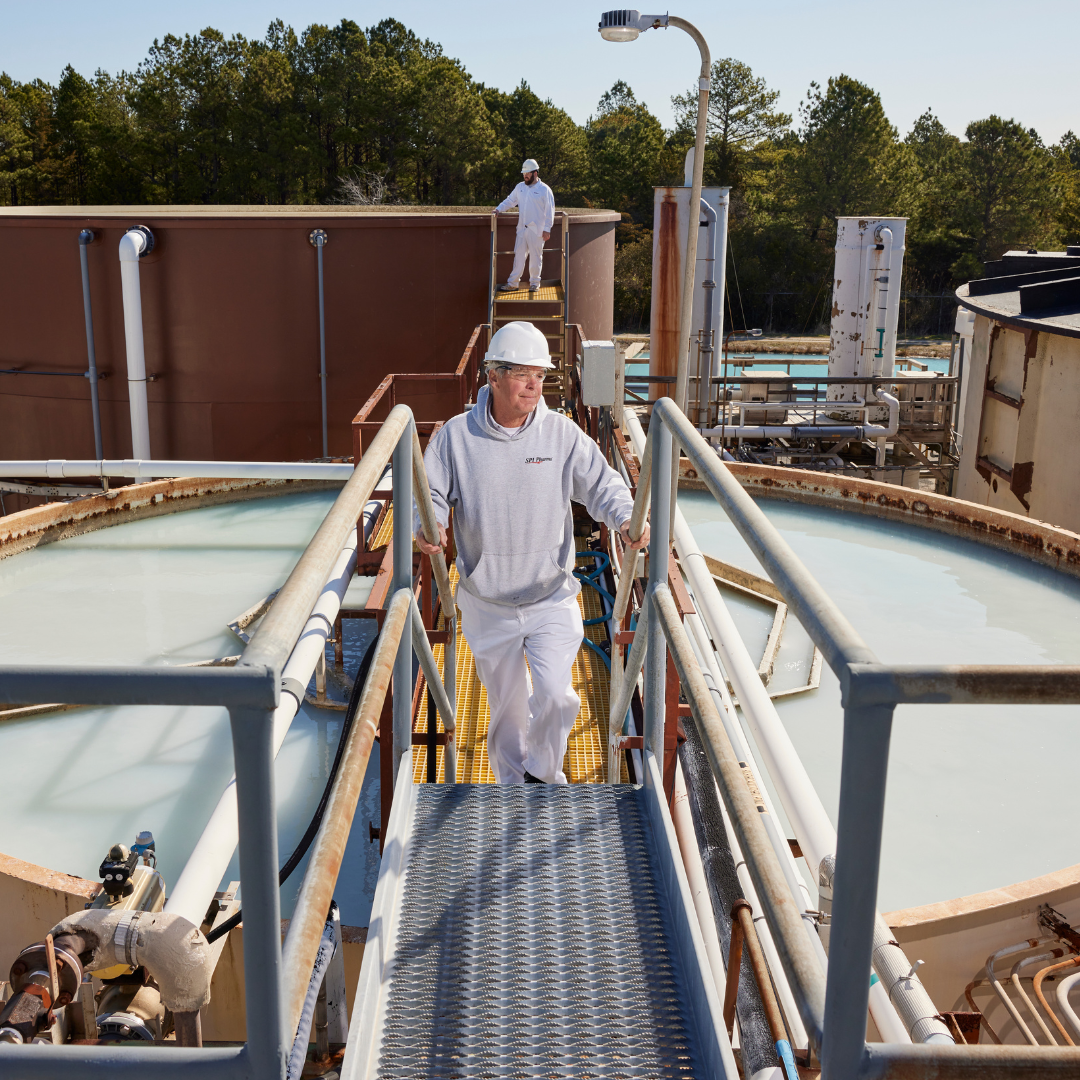About Us
Our Businesses
Investors
Responsibility
Media
Careers
Water is vital to our Ingredients businesses, in particular AB Mauri which relies on water as the medium in which yeast cells grow and reproduce.
 A wastewater treatment plant at SPI Pharma's manufacturing site in Lewes, Delaware, United States
A wastewater treatment plant at SPI Pharma's manufacturing site in Lewes, Delaware, United States
Our Ingredients businesses aim to minimise their impact on local water resources, communities and biodiversity by working to use water more efficiently and return it safely to the environment after use.
In 2025, Ingredients businesses abstracted 15.5 million m3, a 1% reduction compared to 2024. Of this, 76% is attributed to AB Mauri which continues to reduce its need for water through targeted water management initiatives.
The amount of waste water generated across the Ingredients businesses decreased in 2025 by 2% compared with 2024. This reduction in water use and effluent generation occurred despite increased production volumes at AB Mauri and ABFI, and reflects the impact of targeted water efficiency initiatives.
AB Mauri’s total water abstraction in its operations in 2025 was 12 million m3, a reduction of 6% from the previous year. Its water strategy focuses on reducing water use and reusing water where possible, and recycling after treatment where feasible. Each site assesses local water risks to help ensure that any water returned to the environment is managed as safely as possible.
To support this strategy, AB Mauri has developed strong in-house capabilities in water usage and wastewater management, formalised through guidance documents, reporting tools, procedures and standards. A Global Water Champion works with a group of regional water leads to implement this strategy.
Since 2010, AB Mauri has invested $150m in improving its wastewater treatment facilities. Production facilities in several locations have complex on-site effluent treatment plants that include biological processes, evaporators and/or reverse osmosis membrane systems that can produce reusable water and useful co-products. A selection of technologies addresses the local aquatic sensitivities and water quality objectives. At a minimum, sites design their treatment systems to comply with applicable permits and also not disrupt any downstream municipal processes.
The division is also focused on reducing its water intensity ratio (the quantity of water consumed per tonne of product, excluding by-products). In 2025, production volumes increased while water use decreased. Initiatives include large, capital-intensive projects such as the installation of new cooling towers in the Tucuman yeast factory in Argentina completed in March 2025, which reduced its total water abstraction by 31%, and smaller initiatives like reusing wash water at the Bandirma site in Türkiye. Since 2018, AB Mauri has reduced its water use intensity by over 28%.
To manage water risks, AB Mauri has developed an internal tool to assess current and future water supply risks and flood risk using data from the WWF Water Risk Filter, and Aqueduct platforms, as well as local site knowledge. The tools evaluate risks such as water stress, regulation, reputation and quality, and the risk information is updated annually at all relevant sites. Results are reviewed by senior leadership teams and inform the division’s water reduction strategy to 2030.
| 2021 | 2022 | 2023 | 2024 | 2025 | |
|---|---|---|---|---|---|
| Ingredients | 19 | 19 | 17 | 16 | 15 |
ABFI’s total water abstraction in its operations in 2025 was 4 million m3.
ABFI businesses continue to identify opportunities for water management improvement and to increase efficiency, such as by recirculating water. For example, at ABITEC’s Janesville site in the US, a distributed control system was installed to reduce water used in cooling chemical reactors. As a result of this project, water consumption decreased from 175 litres per kilogram to 67 litres per kilogram of product, saving 1.06 million m³ of water over two years. Additionally, SPI Pharma has optimised its filter washing processes to enhance cleaning efficiency and further reduce water consumption.
Waste water is treated before discharge and ABFI businesses monitor various parameters of waste water across their operations. This regular monitoring is essential to help ensure compliance with environmental regulations and to maintain high operational standards.